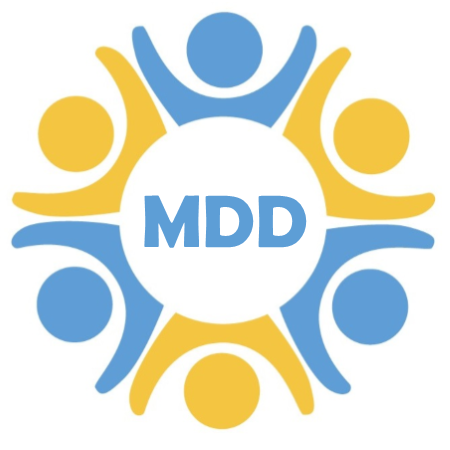Post by: Darra Wray, Founder – My Data Diary, LLC (Originally posted June 11, 2018)
I love HIPAA. Really, I do.
The Health Insurance Portability and Accountability Act (HIPAA) was created to protect personal health information. It was designed to make it possible for health providers to access the information related to patient care while protecting patient rights to access their own information.
Healthcare organizations have invested billions of dollars in healthcare interoperability and information security. They have created patient portals, robust websites, and a complex maze of electronic data sources that patients and / or their caregivers must now navigate. They are also required to manage a myriad of usernames and passwords that must be remembered and regularly updated.
My little family of four (two parents, one 23-year-old son in college, and one 18-year-old daughter) must manage 10 different web portals and 22 different electronic log-ins to access our electronic health information:
- 1 health insurance portal – 3 usernames / 3 passwords
- 2 health system patient portals – 6 usernames / 6 passwords
- 1 primary care patient portal – 3 usernames / 3 passwords
- 2 prescription drug portals – 6 usernames / 6 passwords
- 1 eyewear website – 1 username / 1 password
- 2 healthcare reimbursement websites – 2 usernames / 2 passwords
- 1 employee Wellness portal – 2 usernames / 2 passwords

This overwhelming list does not include the information we might need from our eye doctor, dentist, or any of the five specialists who don’t provide electronic access to patient information. It also doesn’t include any medical records that were created before our providers transitioned to electronic medical records management.
I realized just how challenging this electronic health information maze had become a few years ago through four completely separate medical situations with one common theme… I didn’t have access to the information I needed.
- “Mom, when was my last tetanus shot?” This was the text I received during the workday from my now adult son, Mason, who had injured his hand on a nail at work. I was at work, he was at work, and the immunization record with the tetanus shot information that he needed was at home, in the office, in a file folder that I had carefully labeled “Mason Health Information”. When I told him that I didn’t remember when he had his last tetanus shot, he asked me If I would call his doctor to find out. I had to remind him that because he was over 18, he would have to call because they would not release that information to me now that he was as adult. Luckily, his accident occurred during normal business hours, and he was able to get the information he needed to determine the best course of treatment and avoid over-treatment and unnecessary cost.
- “Honey, when did Maggie have her tonsils out?” This was the text I received during an important business meeting from my husband, Jon. He had taken our daughter, Maggie, to the doctor for her annual check-up. My pathetic response, “Uh… I don’t really remember… she was older than three and younger than 5 because her hair was about shoulder length.” Apparently, the doctor thought there might be a link between some current problems she was having and the trouble she had with her tonsils when she was a young child. The next question from Jon, “Any chance you remember who the surgeon was?”. Are you kidding me?!? I couldn’t even remember how old she was! The paperwork for Maggie’s surgery was ALSO at home, in the office, in the file folder that was carefully labeled “Maggie Health Information”. But, no one was home.
- “Darra, are you taking any new medications since your last visit?” asked the nurse during my annual medical exam. Dang! I totally forgot about that new medication from my other doctor! I proceeded to spend the next five minutes describing the diagnosis and type of medication and browsing through a list of pharmaceuticals with the nurse until I recognized the correct drug. But, I still was not able to provider her with the exact dosage. The information on my prescription was at home, in the office, in the file folder that I had carefully labeled “Darra Health Information”. But again, no one was home.
- “Ma’am, does your Mother-in-law have a living will?”, asked the urgent care physician where Jon’s mother lay struggling for her life after catching the flu and pneumonia last winter. I am ashamed to admit that while we knew that she did have a living will, none of us had a copy of the document, and none of us knew where to find the original. She had mentioned previously that her doctor had a copy in his office, but it was a weekend, his office was closed, and his electronic records were not linked to the hospital’s computer system. I am glad that we had discussed end of life issues with her, and we knew her wishes. I am forever grateful there were no disagreements in the family or among the doctors as we faced the final days of her life because we didn’t find the copy of her living will until almost 3 weeks after she died. It was in her house, in a file that she had carefully labeled. But, unfortunately, it was in a box, in a back bedroom where none of us had thought to look.
I honestly believed I had a good system for keeping track of our family medical records. But, I had become an analog refugee in a digital data world that was becoming ever more difficult to access because of the unintended consequences of HIPAA and other privacy legislation. I realized just how pervasive the problem was and how desperately it needed to be solved when the teacher at a community education seminar on end-of-life planning suggested that we put our end of life documents in a zip-lock bag in the freezer. The reason being that if anything happened to us, our family, friends, or neighbors would certainly clean out the refrigerator and freezer sooner rather than later. THE FREEZER?!? Are you kidding me? What year is this?!? There had to be a better way.
So, I set out on a quest to find a better solution for me and for my family. There were three primary requirements for a solution:
- It needed to capture and store information from my analog files (paper) into a digital format that I could have access to at all times.
- It needed to be accessible to my husband and my other care companions in the event that anything ever happens to me.
- It needed to be secure… remember, I really DO love HIPAA.
When I couldn’t find a solution that met my needs, I decided to create one for myself, and My Data Diary+® was born. I now have all of the personal, household, health, financial, legal, and legacy information that I need stored on an encrypted USB thumb drive that I keep on my keychain with my car keys and my house keys. As long as I have my keys, I have access to any information that I need.
It is going to be many years before the information access and interoperability issues that impact personal, financial, and medical information today are solved. Until then, I encourage you to take the steps necessary to ensure sure you always have access to the information you need for yourself and your loved ones.
I invite you to join my revolution to liberate your data!
